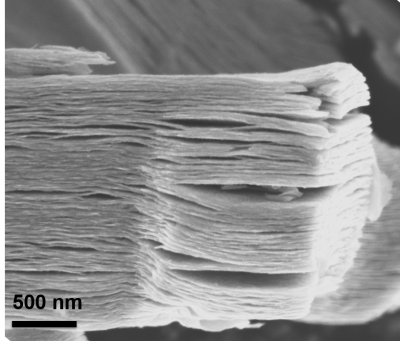
Shielding is crucial for all manner of electronic devices. Whether you want to keep power supply noise out of an audio amplifier, or protect ICBMs against an electromagnetic pulse from a nuclear attack, the basic physics behind shielding remains the same. A Faraday cage or shield will do the trick.
At times, though, it would be desirable to shield and unshield a device at will. A new class of materials known as MXenes may be able to offer just that functionality, with microscopically thin films serving as shields that can be switched on and off at will.
Shut It Out

To understand how MXenes make a Faraday cage that can be switched on and off, first we must understand Faraday cages and shields themselves. Faraday shields are enclosures created out of conductive material that serve to block electromagnetic radiation from their interior. Faraday cages are much the same thing, but are built with mesh rather than out of continuous material. You’ve probably spotted shielding on all kinds of equipment, such as in stereo systems or your old Amiga 500. The basic principle is that an external electrical field around a Faraday shield causes the electric charges in the shield to distribute themselves in a way that cancels out the effect of the external field inside the shield itself.
Faraday shields tend to attenuate a broad range of frequencies quite effectively. In the case of Faraday cages, though, the size of the holes in the cage’s mesh play a major role in the penetration of electromagnetic radiation. Shorter wavelengths correspond to higher frequencies and will better pass through meshes with with a given hole size. A good rule of thumb is that the holes in the mesh should be less than 1/10th the size of the wavelength to be attenuated. For example, 2.4 GHz radio transmissions have a wavelength of 125 mm. Thus, a Faraday cage designed to block this frequency would require a mesh size less than 12.5 mm. Visible light, which is an electromagnetic wave with a much smaller wavelength, would readily pass through such a mesh.
Etch Away

The materials themselves consist of a conductive metallic layer in the form of a carbide, nitride, or carbonitride, sandwiched in between oxide layers. They are typically manufactured using transition metals like titanium, vanadium, niobium, or chromium. MXenes are made from from MAX phases, a family of hexagonal layered carbides and nitrides which also contain “Group A” elements like aluminium, germanium, or gallium. These Group A elements are removed or “etched” away via chemical processes, leaving the metallic (M) and carbon or nitride (X) atoms – hence the name.
The value of MXenes is that they are conductive, while having a mesh-like structure. If you’ve been following along so far, you’ll know that the dimensions of that mesh structure determine the material’s shielding ability as a Faraday cage. In the case of MXenes, the size of the holes in the mesh structure can be varied by combining the materials with an electrolyte solution. By applying an electric charge to the combination of electrolyte and MXene material, ions can be made to flow in a way that stretches or compresses the MXene structure. In turn, this varies the material’s conductivity and shielding performance.
As published in Nature, researchers have been able to make practical shielding using MXenes that can be switched on and off. In testing, a thin MXene film was able to variably attenuate or pass X-band signals, 8.2 GHz to 12.4 GHz, by applying potentials of less than a volt. The film readily held up to over 500 switching cycles in testing while sustaining the same level of performance. Future work will involve testing the material’s shielding performance at other frequency ranges, and increasing the strength of the shielding effect.
It builds on previous work that has explored the use of compressible conductive foams for the same purpose. The benefit of MXene films is that the same effect can be achieved on a much smaller level. Variable shielding foams are on the order of millimeters thick, and must be mechanically compressed or decompressed. MXene films, on the other hand, can be electrically controlled, and are less than a micrometer thick. They could even potentially be manufactured into microchips themselves as a variable, controllable RF shield.
It’s an exciting technology that could just be the new hotness in the RF world. Alternatively, MXenes could be the new graphene – the darling of the science media that still hasn’t delivered on all the fantastical promises once foretold. As always, time will tell. In any case, to avoid embarrassing yourself at a future conference, just know this: the term is pronounced “max-eens.”
No comments:
Post a Comment